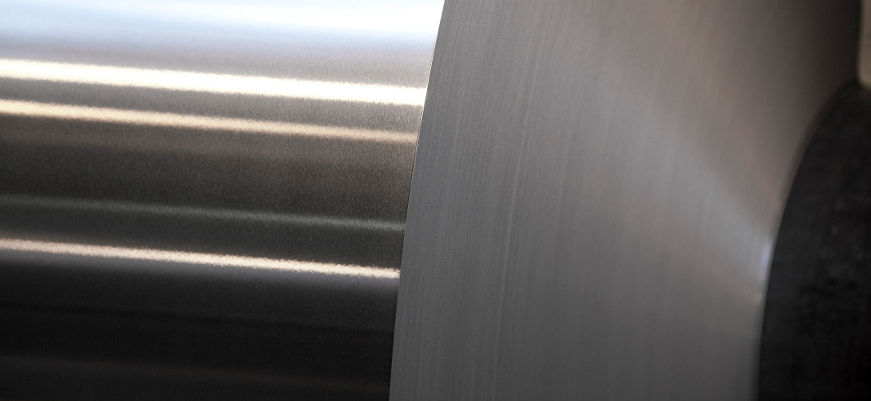
Aluminum And It’s Industrial Importance
Aluminum is the third most widespread metal on Earth and appears in compounds with silicon, oxygen and sulfur. In the metal processing industry, aluminum is the most used metal after steel.
Aluminum as one of the main metals in today’s industry
Aluminum is the third most widespread metal on Earth with a percentage of 7.3%. However, for a long time, the world did not know about its existence and its way of production. The Englishman, Sir Humphrey Davy, had discovered his existence exactly 208 years ago, or in 1808, while only in 1854 the first primitive ways of getting this important metal were developed.
Technological processes by which aluminum is produced even today were only discovered in 1886, and the most deserving of it were Paul Herlot and Charles Hall who discovered the production method by electrolysis.
In addition to this finding, it is interesting to note that the aforementioned scientists did not know about the existence and operation of the other, and although they were at the opposite parts of the world, and without any contact, they have managed to develop a completely identical method of production.
Technological process of aluminum production
As has been said before, aluminum is produced using the Hall-Heroult process, or Bayer’s process. The Bayer process consists of obtaining the alumina which is again obtained from the bauxite. In order to produce two tons of aluminum, it is generally necessary to have four tons of bauxite.
Alumina is added to the bath together with the cryolite, and by lowering the anode the electrolysis begins. The anode is usually changed every 20 days due to its increased consumption. Through Electrolysis, alumina is dissolved in the bath, forming various aluminum oxyfluoride ions.
In this way, numerous fluorides are produced and then carried out through the purification system to avoid the atmosphere being contaminated. Apart from the harmful gases produced by the anodes, the problem is the so-called red sludge from which aluminum hydroxide is obtained.
With the development of the technological processes, aluminum production has advanced greatly. The first factories that produced aluminum had cells with a power of 1,000 amperes, while today’s factories supply their cells with a power of as much as 500,000 amperes.
Aluminum as a constructive metal
Aluminum is now used in the construction of various objects or parts. The reason for the application of this metal is its resistance to corrosion, strength and small mass. For this reason, some parts in cars and aircraft are made of aluminum.
Some of the other applications, in other words items made of aluminum, are:
- Aluminum rods – are commonly used in construction
- Aluminum Sheets – Used in construction, mechanical engineering, dairy production, electrical engineering, food industry
- Other aluminum profiles – used for making frames of; for example desks
- Aluminum alloys – have different applications, from shipbuilding to crafting
Aluminum properties
As it has been said before, aluminum is being applied in numerous industries thanks to its properties, among which the most important are:
- Almost three times lighter than steel
- Good stretch and strength properties
- Excellent properties at low temperatures
- 13 times higher thermal conductivity than stainless steel
- Does not possess magnetic properties
- Good processing
- Excellent resistance to external influences
- Excellent electrical conductivity
Aluminum processing
Because of its features listed above, aluminum is easy to process. However, during processing, beware of heating the aluminum, which is primarily related to welding or grinding.
By heating, aluminum can be deformed, or when welding, with high-temperature development, weld metal porosity may occur. As for the most common welding methods when it comes to aluminum, TIG, MIG, and electro-welding are used.
When grinding aluminum, one should be very careful as it can happen that at an elevated number of turns done by the grinder, the aluminum can become dull. If high gloss is to be achieved, the aluminum should be grinded in several cycles with different grinding plates, and with different pressure on the surface.
One of the methods of aluminum processing is the anodising, or the intentional oxidation of aluminum so that it remains protected against external influences or assumes a certain color. Anodizing is most often carried out in the alkaline bath, by the electrolysis process.
Almost all metals have a reflective property, which is especially the case with aluminum. The reflective property of aluminum can cause destruction or damage to the laser, by which the cutting process is being done.
However, what is actually reflection?
Reflection is the property of metals and materials in general, which causes the repulsion of beams (eg light) back to the source, which in the case of laser cutting means the reflection of the laser beam into the optical parts of the laser cutting machine.
Due to the reflexive property of aluminum, prior to cutting, a coating layer preventing reflection is being applied to it.
However, this is not enough because the reflection does not only come from the surface of the aluminum sheet but also from the molten aluminum resulting as an inevitable cutting product.
That’s why, when cutting the aluminum, it is necessary to adjust the cutting parameters, which reduces the reflection to a minimum or completely eliminates it.
Most of today’s laser cutters have a system specially designed for aluminum cutting, which follows the cutting parameters and, after the occurrence of a possible critical reflection, turns off the laser beam and thus prevents possible damage.


